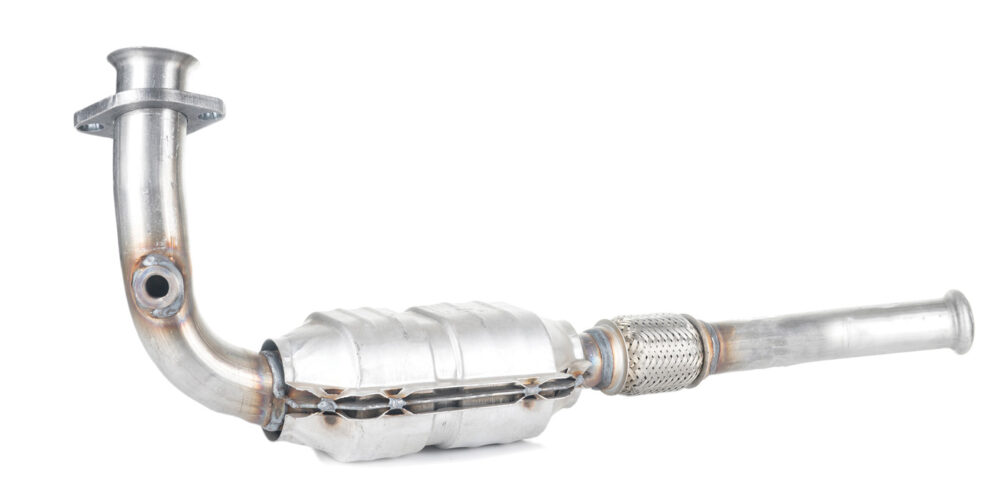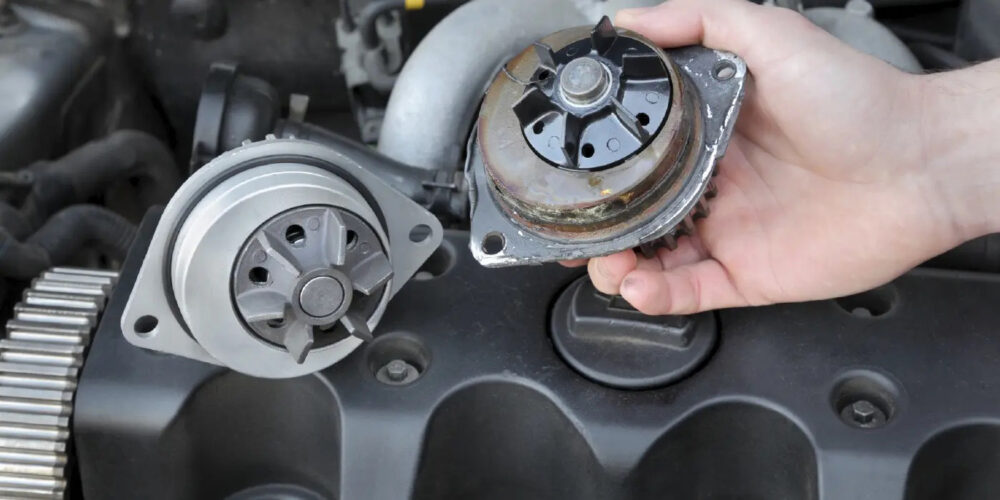Recently, I was reading about catalytic-converter theft when I came across an article that, if nothing else, put a light spin on the day. It informed me that a catalytic converter is a round canister that connects two pieces of piping in the exhaust. Hmmm. Sounds like a lot of mufflers and resonators I know. It also attempted to describe the symptoms of converter theft. I chuckled as I thought to myself, “You will know.”
Exhaust systems have a unique place in the automotive aftermarket. They likely are the most common components of all to be removed and thrown away when they’re in perfect condition. It’s all in the name of performance – or at least perceived performance through sound. But this article isn’t about performance. It’s about all mufflers and converters, and the name of the game here is fit.
Say “catalytic converter” years ago, and the comical description above was at least a little closer to accurate. However, converters today are almost synonymous with the term “direct fit.” Most converters are part of the downpipe that bolts directly to the exhaust manifold, or they’re part of the manifold themselves. In addition, most cars now have two converters to keep emissions in check, and what this comes down to – coupled with the fact that underhood real estate is no longer the vast open space it used to be – is that there’s no room for error with the alignment and fit
of a converter.
They either fit or they don’t. There’s no in-between or close enough. Most oxygen (O2) sensors are located in the converters as well, and usually two. The factory harnesses don’t give much wiggle room, so if O2-sensor bungs aren’t in the correct location, it poses another problem.
Why Ask Why?
Fit aside, the most important factor is why your customer needs a new catalytic converter, because they’ll look to you for advice. Unfortunately, it could be from theft, in which case they may need more than just a converter, since the exhaust system was also probably damaged in
some manner.
But from a regular repair standpoint, the most common reason for converter replacement is the “Check Engine” light. P0420 – catalyst efficiency below threshold – is one of the more common diagnostic trouble codes (DTCs) we see as technicians.
It’s one of the more self-explanatory code definitions there is, and the majority of the time, the catalytic converter is the cause of the problem. However, it’s also important to warn your customer that an exhaust leak, bad O2 sensor, misfire or rich or lean running could cause the problem, and unless they’ve had the problem professionally diagnosed, you simply can’t guarantee that it’s a converter.
This opens the opportunity for upsells with spark plugs, coils, exhaust components or O2 sensors. Since DTC P0420 alone doesn’t indicate an immediate danger of breaking down, a DIYer may decide that it’s time for a tune-up and general maintenance, and they’ll start with that. If the code persists, then they can move on to the converter. Just make them aware of the possibilities so they know what they could be faced with going into it.
Selling Opportunities
Is there anything you can do to prevent catalytic-converter theft? Some people engrave or paint their converters to discourage it, but I personally can’t say whether it’s effective or not. Also available are different designs of converter “locks,” which often look like a network of cables or a cage, and sometimes a shield. Your company may carry some of these products, making another good suggestion for customers.
Even if replacement is a result of regular maintenance, a converter “lock” is a nice upsell, especially on taller trucks and SUVs. They’re more common victims since you can generally slide underneath, offering easy access to the converter.
Mufflers, at least from a standpoint of fit, can be a little easier to deal with, because there’s usually a little more room to work with. This fact alone is one reason there are so many custom exhaust options on the market. Older vehicles and trucks have the most room, opening up plenty of options for different mufflers with different sound levels and tones.
Exhaust adapters and couplers make almost infinite possibilities for installation, but if you’re helping someone get the right parts, help them to find what they need while utilizing the fewest adapters possible. Even if they have to try a few different options and return what doesn’t work, it makes a cleaner installation and saves money on clamps.
Many people prefer to go with factory-style exhaust, especially on sedans where space is limited. Performance exhaust systems on many new cars have similar space restrictions as converters, and performance or stock, selling specific make-and-model systems is often the easiest thing to do – as well as the best thing to do to save your customer some grief.
Those looking for a universal replacement style of muffler or a custom system most likely are experienced with this type of installation, and they’ll know exactly what they’re looking for.
When someone is installing an exhaust system, good recommendations are new hangers, exhaust sealing putty, mechanic or leather gloves and safety glasses. Exhaust putty isn’t a substitute for proper component fit, but it’s a nice touch that can prevent small leaks. The biggest thing about exhaust work is you’re underneath it and rust always likes to fall into your eyes, making safety glasses an important piece of personal protective equipment. The other exhaust caveat is that there’s always a sharp edge or two, especially when you cut a pipe. Durable gloves (not latex) are the best protection, and this is one job where I always recommend them.













